
1. What we now understand is that animals gather their own insights about us and respond. This foal, Chloe, isn’t far from her mama, and while she’s nibbling on a stalk of grass, she is observing the photographer with an alert ear.

1. What we now understand is that animals gather their own insights about us and respond. This foal, Chloe, isn’t far from her mama, and while she’s nibbling on a stalk of grass, she is observing the photographer with an alert ear.

2. In this moment the two beings are connecting through eye contact and touch, a distinctly nonverbal flow of giving and receiving communication.

3. The wild horse has long been a cherished symbol of American freedom, and we see that same glorious heritage in our domesticated horses. Their nobility and beauty is part of what inspires us to draw closer and learn from them.

4. Today’s horsemanship practices the subtle art of communicating with our horse partners without force or bullying, so that we can practice our own attunement with them. Michael is persuading Ruby to step back, and she’s deciding how to respond.

5. Equine-Partnered Psychotherapy and Coaching relies upon the horse’s honest response to a client. Communion with a horse creates a space for safety and hope, where trust is a two-way street.

6. For some people, horses with their long faces, big heavy feet, and powerful frames don’t seem all that approachable or intelligible. Perhaps because they don’t have eyebrows or faces that express emotion in the way we can read with dogs, horses have been mistaken as dumb beasts with no interior life, and therefore available for our exploitation.

7. As van der Volk comments, for some people, working with horses may be safer than dealing with human beings. This woman was apprehensive about working with horses. Bo tucked his head over her shoulder in a comforting embrace. His warm slow breaths filled her hand and warmed her chest, which in turn started to influence her physiology, encouraging her to slow down and bringing her body out of flight/fight/and freeze mode.

8. Week after week, Steve walked with Gypsy, talking to her, and working with her. While he was physically walking and talking with her, he was also walking with the pieces of himself he had lost in Vietnam, reclaiming them and giving those emotions a safe place to be felt, seen, and heard by another being.

9. “I had just turned thirteen that summer and was completely devoted to riding Schedule A.”
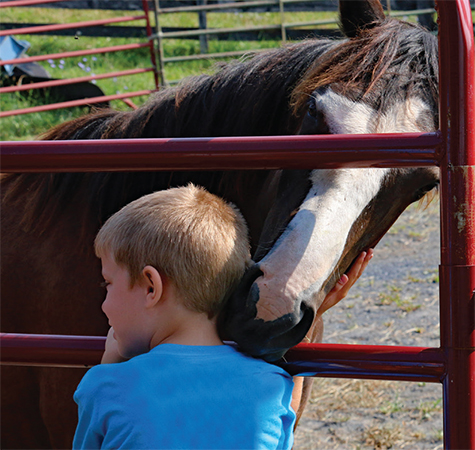
10. Despite the awkwardness of the gate, Wastella recognized this child’s need for connection. They stood together a long time, she nibbling gently on his neck, he with his face as close as he could get, and his hand caressing her cheek. Both were respectful with their requests for connection. This is exactly what happened for Michelle. She did not invade Schedule A’s space; the intuitive horse immediately recognized her yearning for affirmation. It was the first time Michelle could recall being willingly touched since her illness.

11. “I had found what takes horsemen a life-time to find—horses want connection and a relationship first and foremost.” Michelle’s bond with Diesel is the profound expression of the love that began with Schedule A, who taught her how much a relationship with a horse can be mutually beneficial and desired.

12. Cocoa Puff was slow to agree that humans could be trusted. She and Ashley had so much in common, we were not surprised that she was drawn to the little girl.

13. “A couple of times Cocoa reached in the toy box and came up with a stuffed animal in her mouth. She would shake and wave it in the air,” much as Topaz is doing in her “capture the flag” moment here. The ability of the horse to engage with clients and the props they use is sometimes surprising to people, but horses can be curious and playful in EPPC sessions! They respond appropriately to the energy of the client.

14. Ashley was intrigued by Radar as he stood in the field by himself. “Did Radar understand what was happening? Did he think he did something wrong?” Her questions were perceptive and gave us some insight into how she was processing her own family situation.
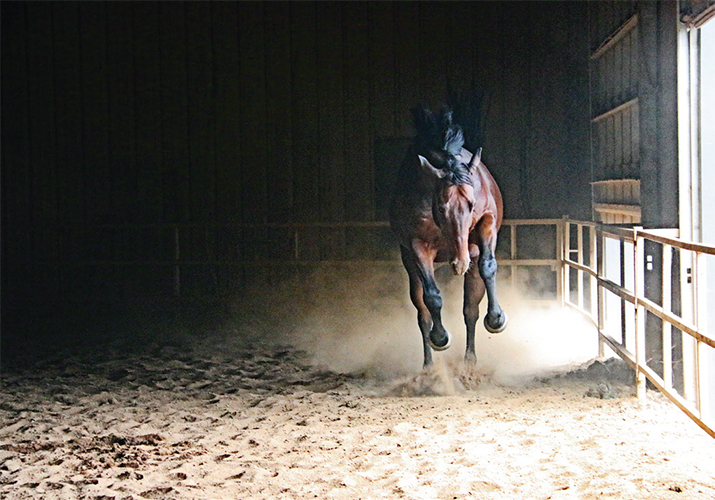
15. This horse was hard to see as he was running around a shadowy indoor arena. And then he emerged, boiling up out of the dust and darkness. Radar’s sudden appearance in Ashley’s space must have been just as alarming to her.

16. Bo had a lot of encouragement from the group around him to go over this obstacle. Ashley was able to persuade Radar to accomplish a similar task but all on her own! Her success came because she and Radar had learned to communicate honestly and openly with each other.

17. Delilah’s front half was refined and Arabian, while her hind end was strong and built for power. Her peculiar balance physically could also reflect her sporadic behaviors emotionally—she tended to swing from happy-go-lucky, to dissociative and/or aggressive, but always yearned for connection. It was interesting to watch clients with similar behaviors be drawn to her power and strength.

18. When Cocoa watched Brenda with Delilah, her head and neck were relaxed, and she moved her lips and jaw in a licking and chewing fashion. Typically for horses this is a sign of acceptance and willingness to engage. Here Puzzle and Alicia are similarly communicating with quiet, almost imperceptible body language. Just by sharing the space, there is a connection of acceptance between them.

19. Wiscy (short for “Wisconsin”) was pretty, but he was also the baby on the property and still learning about personal space.

20. The other horses weren’t that happy to have Wiscy on the scene. Here Peppy is trying to ask Wiscy to leave the hay manger, but Wiscy is not yielding to his request. With people, Wiscy brought the same energy. He became pushy with his enormous head, trying to get others to interact with him and meet his needs on his terms.
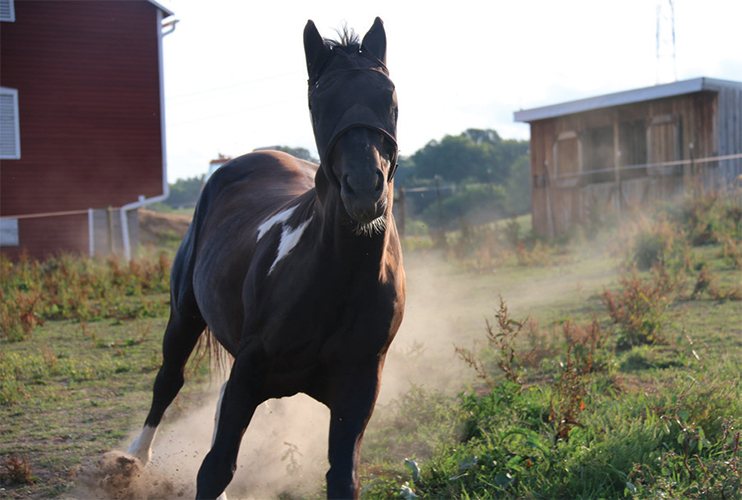
21. Brenda knew how to make a horse that was coming right at her, like this one coming at the camera, stop. She had learned it in previous sessions. But her first time with Wiscy triggered her old defenses.

22. For Brenda, learning to stand her ground and stay present in her body with a horse as large as Diesel—shown here with Michelle, who is over 6 feet tall—was quite an accomplishment. It filled her with pride and a sense of knowing that she was stronger than she gave herself credit for.

23. Like many ex-racehorses, Bear was a bit skittish, poised and ready to run at any moment.

24. Henry and Bally are grazing, moving in synchronous steps (entrainment), a sign of being at peace with me being in their space, although notice they both have an ear on me. Any sudden movement would certainly get their attention.
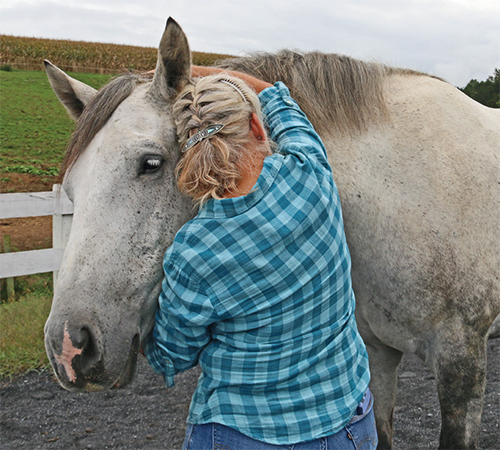
25. When another being embraces you with open love, the flow of compassion and understanding can transform hurt and pain into willingness. With an embrace like this one, Bear gave Gwen a gift that she would not receive from any human—an action that opened the doorway for her to heal.

26. The beauty and power of horses is mesmerizing. Hancock and Star, both senior horses and EPPC participants, share a moment that embodies horse exuberance at any age.

27. Horseplay can be rough, which is why Michelle was concerned about safe boundaries for Mason. Horses re-establishing social boundaries are not merely playing, they are confirming social order and what is acceptable behavior in a herd.
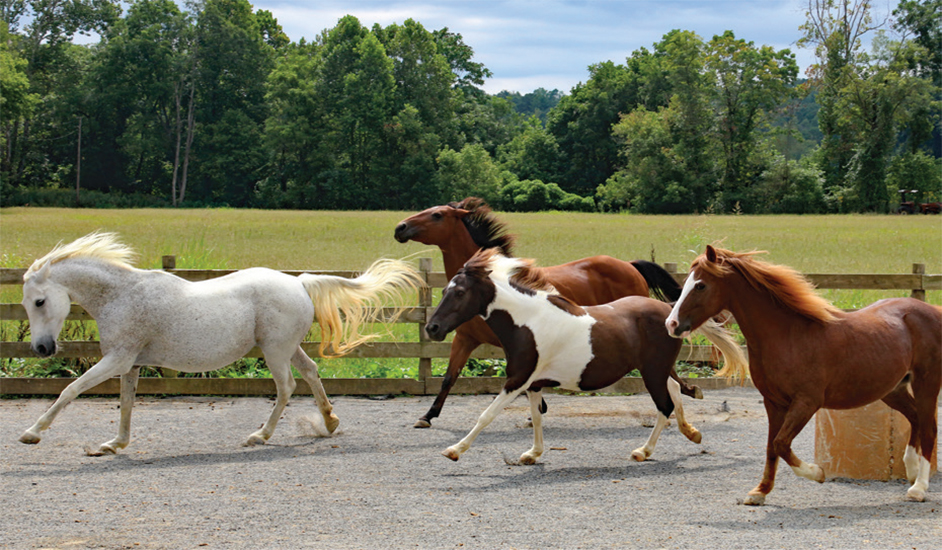
28. The herd ran up and down the fence line, kicking out, rearing up, and bucking. Mason wasn’t afraid—he wanted to play with them!

29. Hooves, mouths, and lots of posturing show up in good-natured horse games, like King of the Mountain.

30. “How can you tell it is playing?” Michelle asked Mason. “Because, look! See, they aren’t touching each other or hurting each other,” he replied.

31. Horses adapt to the rhythm of footfalls, and when they are attuned to a companion, they walk in symmetry. That’s what Jake’s ponies did with him, indicating how well they understood his emotional and physiological state.

32. Jake used hula-hoops on the ground to symbolize his safe space. These workshop participants are using a hoop in much the same way—to inquire about safe space with the pony Puzzle. Just as Cookie and Squire gave Jake feedback through their body language, so is Puzzle doing here. What do you feel he might be saying?
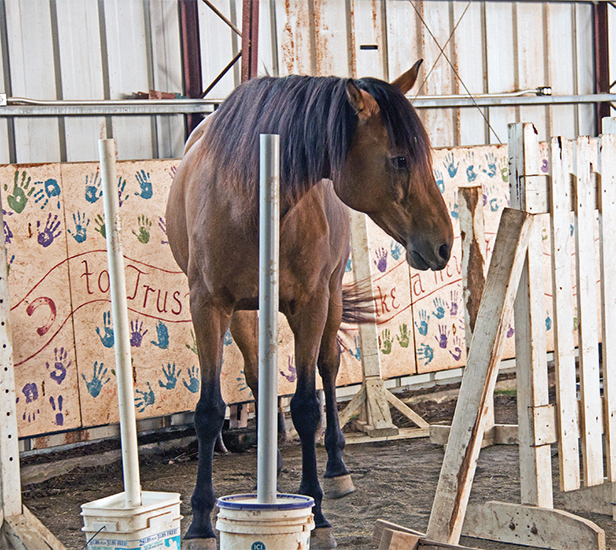
33. Diesel turned around inside the box Ben had constructed and began to nudge one of the poles with his head….

34. …. One last hard whack knocked it over, and Diesel calmly walked out of the box.

35. Whether an American Quarter Horse racing the wind…
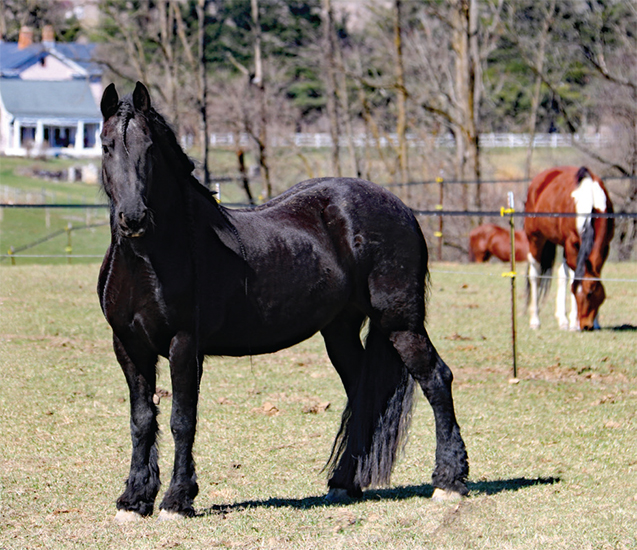
36. …or a Friesian Queen striking a pose, the horse’s timeless beauty never fails to awe and inspire.

37. Traditional horsemanship is focused on tasks, and learning/conditioning your body to master postures in order to gain subtle, particular movements from your horse and yourself.
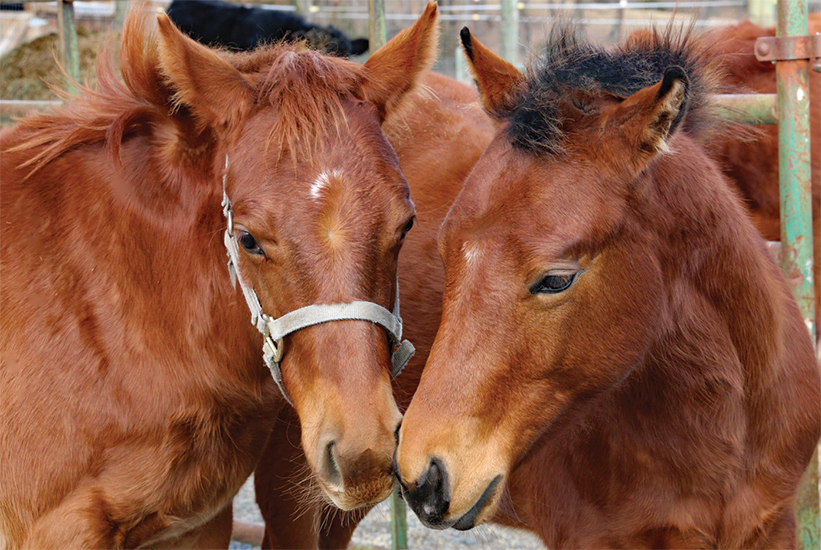
38. Horses desire to form balanced bonds and connections with their herdmates.

39. The horse is there to guide, give feedback, and provide a supportive partner that does not judge. At first hesitant, this young woman shows her delight when Miles curves around her to offer his head for connection.

40. Horses are willing to work through blocks, fears, and stumbles, and will stand with you, as long as your spirit is willingly engaged.

41. All creatures yearn for natural beauty and the freedom to live in peace and plenty. Through partnership with horses in EPPC, a doorway to a new story is created, one of healing and insight and unbridled change.